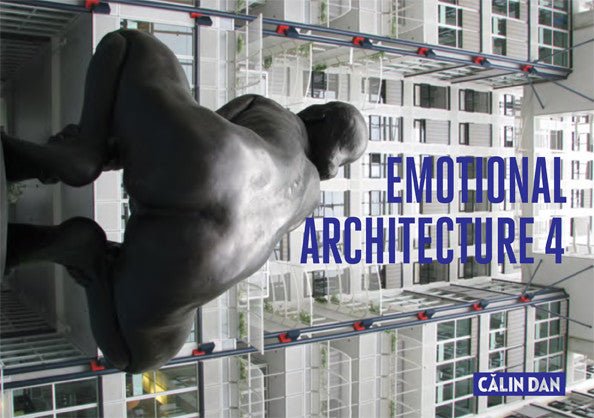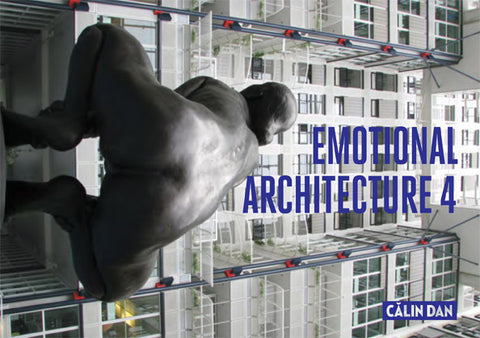Your cart is currently empty!
Architecture
Emotional Architecture #4 - Calin Dan
+++ +++
+++Calin Dan, Judith Angel, Adela Marcu+++
978-94-90322-39-7
Arnold Estefán
128
15 x 21 cm
Paperback
Date of release: December 2013
Translations: Alistair Ian Blyth
Published with financial support from the Mondriaan Fund.
Over the past few years the Romanian-Dutch artist and theorist Calin Dan (1955) has identified a very specific field of research, defined as 'Emotional Architecture', while developing a highly personal idiom where video and photography, next to text and music, play an important role. Dan focuses on the use, the experience, the meaning and the emotional value of architecture and urban environments. Through his observations of the city, his explorations of neighborhoods, his contacts with dwellers and visitors, and through his research of traditions, Calin Dan developed an almost psychoanalytical way of looking at things. His work is an original blend of personal observations, folklore, historical facts and architectural analysis.
The subject of Emotional Architecture 4 is the MinVROM building in The Hague. It is not only a strong architectural and urban landmark; but it is also a turning point in the way public architecture articulates with political representation in the Netherlands. MinVROM was the last project directly and purposefully commissioned by a government body to an architect's office, according to a vision stemming from ideological, political and representational values. From there on, economic arguments helped the decision to give up the idea of the government (or government bodies) as client and beneficiary of a pre-designed vision, and to substitute it with a relation landlord-tenant, where government institutions will let building units developed independently, by teams of architects, developers and urbanists. Such a decision has deep impact on the relationship between the political and the social bodies, as the first withdraws from the public domain into a neutral, almost image-less position, comparable to the one of the corporations migrating from station to station, according to momentous priorities.
€17.50
Emotional Architecture #4 - Calin Dan
€17.50
Architecture / Art / Photography
978-94-90322-39-7
Arnold Estefán
128
15 x 21 cm
Paperback
Date of release: December 2013
Translations: Alistair Ian Blyth
Published with financial support from the Mondriaan Fund.
Over the past few years the Romanian-Dutch artist and theorist Calin Dan (1955) has identified a very specific field of research, defined as 'Emotional Architecture', while developing a highly personal idiom where video and photography, next to text and music, play an important role. Dan focuses on the use, the experience, the meaning and the emotional value of architecture and urban environments. Through his observations of the city, his explorations of neighborhoods, his contacts with dwellers and visitors, and through his research of traditions, Calin Dan developed an almost psychoanalytical way of looking at things. His work is an original blend of personal observations, folklore, historical facts and architectural analysis.
The subject of Emotional Architecture 4 is the MinVROM building in The Hague. It is not only a strong architectural and urban landmark; but it is also a turning point in the way public architecture articulates with political representation in the Netherlands. MinVROM was the last project directly and purposefully commissioned by a government body to an architect's office, according to a vision stemming from ideological, political and representational values. From there on, economic arguments helped the decision to give up the idea of the government (or government bodies) as client and beneficiary of a pre-designed vision, and to substitute it with a relation landlord-tenant, where government institutions will let building units developed independently, by teams of architects, developers and urbanists. Such a decision has deep impact on the relationship between the political and the social bodies, as the first withdraws from the public domain into a neutral, almost image-less position, comparable to the one of the corporations migrating from station to station, according to momentous priorities.



